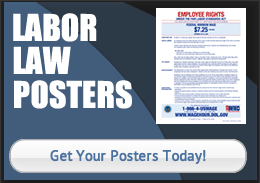Complete Story
06/26/2017
Everyone is NOT Your Customer
Source: Fleet Management Weekly
Several months ago, I signed up for an energy saving program. The company identified an hour of the day when energy costs were high and paid consumers to use less energy during that hour. I was rewarded if I used less energy than my forecasted use. Text messages would encourage me to earn 300 points by reducing my power by 1 kWh. The problem? I was only forecasted to use 0.17 kWh, and there was no way I could use less than 0 kWh. I would never earn the big points. And I’d lose points if I went over my forecasted amount, which I did one day by microwaving my lunch.
I was so demoralized by my experience, I wrote a frustrated chat message to customer support after hours. To their credit, they took the time to email me, and eventually talk with me. The problem was that their business model did not work for people who were low energy users. The CEO said that he also fell into that category. But if you look at the website, the text asserts that everyone can earn weekly payments just by saving energy once per week.
Despite their pro-active customer service, can you guess how many people I told to try this service? Zero. And therein lies the danger of promoting your product as if everyone were your target customer. When you inaccurately set expectations, people won’t come back. They won’t recommend your product, and they might pro-actively complain about it to anyone who’ll listen. That’s why it’s critical to narrowly define your target audience.
Too many companies believe that everyone is their target customer. But products don’t speak to the masses, only to a defined audience. You need to find your niche and concentrate on that group.
Successful companies don’t market to everyone. You see this with grocery stores even though everyone has to eat. Whole Foods targets environmentally conscious shoppers with higher incomes. Safeway targets lower to middle-income households looking for inexpensive basics. And Trader Joe’s targets foodies who are price conscious.
When you start by defining a niche audience, you can invest your marketing budget on a highly targeted audience that is already talking about your industry. You can create custom websites that address specific needs or pain points. And you can craft your product’s feature set to meet those needs.
Consider two areas when defining your target audience. First, create a fictional buyer whose needs align perfectly with your product. For example, with grocery stores, what do customers want when it comes to selection, price, customer service, hours, and environmental responsibility? Refer to my article on design personas for more details on fictional buyers.
Second, think about your best customers. Who repeatedly buys from you? Who spends the most money on your products? Who refers their friends? Then look for similar characteristics for these best customers. Consider basic demographics such as age, race, geography, and gender. Look at education level, salary, and careers. Find out where they get their news, what they care about, and what they do for fun. And research their reason for doing business with you, or recommending you to a friend. Once you find common traits, focus your marketing, website content, and product features on this intersection.
Based on energy usage, I’m not a “best customer” for this energy company. But imagine if this energy company had set expectations up front. What if they were clear that the service worked really well for people who used at least 1.5 kWh an hour? I would know it’s not for me, but I would recommend larger households give it a try. Your product is not for everyone, but don’t lose good will and virality acting as if it were.





